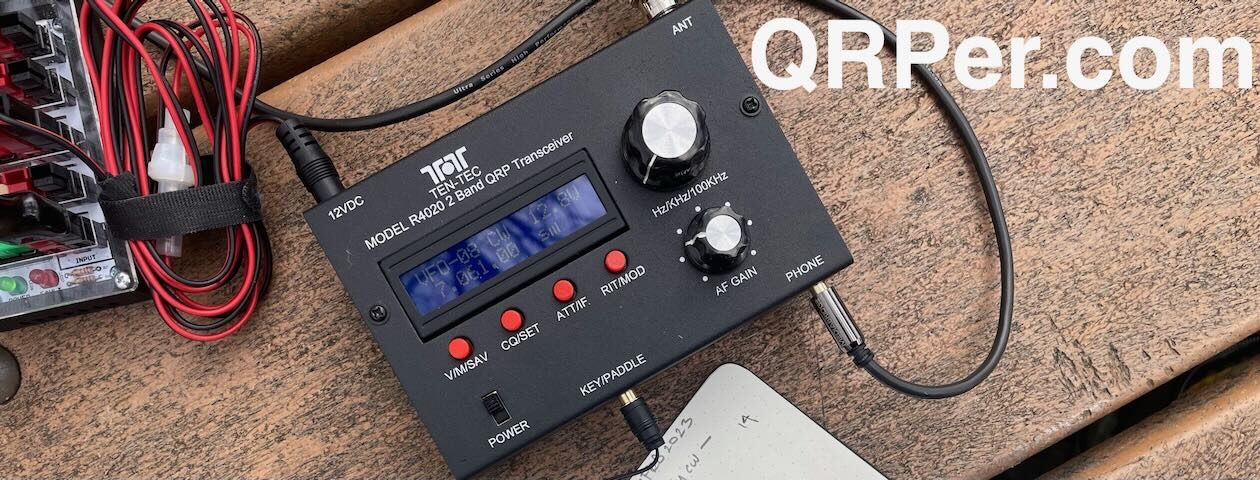
Ten Days of QRP with Compromised Antennas
by Brian (K3ES)
At the end of a hard (or even a not-so-hard) winter, Becky and I really enjoy the opportunity to spend a week at the beach with friends. Even with the cooler and more unpredictable weather late in the off-season, it provides welcome relief from the cold and snow that we often get in northwest Pennsylvania. This year we chose to visit Ocracoke Island, at the southern tip of the North Carolina Outer Banks.
While driving down and back, I fit in Parks on the Air (POTA) activations at parks in Maryland, Virginia, and West Virginia. Each of the activated parks was new to me, and so were their states. My time at the beach also included daily POTA hunting. I knew that my radio activity would all be conducted using CW mode, and low power. All of my contacts on this trip were made with 5 watts, except for a brief stint where I increased power to 10 watts to fight band noise during a longer QSO with my code buddy. What I did not expect was that all of my contacts would be made using antenna configurations that were less efficient than normal.
At each of the activated parks, I paired my Elecraft KX2 with a brand new Elecraft AX1 vertical antenna. While it proved very effective at making contacts, the 4 ft high AX1 vertical definitely compromises gain to achieve its tiny form factor for HF operations. Once we moved into our rented house on the island, we knew that storms were expected. In fact, gale warnings were issued for our area twice during our week-long stay. Besides cutting off ferry service to the island, I feared that high winds would bring down any antenna mast that I might try to use. So, I deployed my shortest wire antenna in a low configuration that I hoped would resist the wind, yet still enable some contacts. I certainly did not expect it to perform like it had many times before when deployed in vertical or inverted V configurations, but proof would be in the contacts. I will avoid suspense by saying that this installation was unaffected by the high winds that were predicted and received.
Gear
[Note: All Amazon, CW Morse, ABR, Chelegance, eBay, and Radioddity links are affiliate links that support QRPer.com at no cost to you.]
- Elecraft KX3
- SideKX end-panels and cover for the KX3
- Bioenno 4.5 Ah LiFePO4 battery
- Elecraft AX1 antenna with AXT1 tripod adapter and AXE1 40m extension coil
- Generic table-top tripod with 1/4”-20 stud for compatibility with AXT1
- Homebrew RG316 feedline with 2 x BNC male connectors, in 12”, 24”, and 60” lengths
- Tufteln EFRW antenna with 9:1 unun, 35 ft radiator, and 17 ft counterpoise
- Homebrew VK3IL-designed, pressure paddles
- Generic earbuds
- Rite in the Rain No. 946 notepads
- Pentel Twist-Erase mechanical pencil in 0.9mm
- US M7 Army Light Weight Service Mask pouch: WWII vintage, canvas construction
Monocacy National Battlefield – US-0705

Our trip south took us close enough for a visit to our 3-year old grandson and his parents. Truth be told, any distance would have been close enough, so even though greater-Baltimore is slightly off the direct path, that was the destination for our first day of driving. On the way to Baltimore, we also passed within a couple of miles of the Monocacy National Battlefield, near Frederick, MD. So, we spent a couple of hours exploring interpretive displays at the Visitor Center, and of course, activating the park.
As a Civil War history buff, I knew of the Battle of Monocacy, but little about its details. Briefly, in July of 1864 a small Union force faced off against a much larger Confederate Army led by Lieutenant General Jubal Early. The Confederates were moving against Washington, DC in an attempt to take the pressure off of the defenders around the Confederate capital of Richmond, VA. While the battle was a tactical defeat for the Union, it proved to be a strategic victory, because it delayed the Confederate advance for two crucial days. In that time Washington’s defenses were strongly reinforced, so the Confederate Army withdrew back into the Shenandoah Valley without accomplishing its mission. More on that later.

For the activation, I set up my station at a picnic table. A table top tripod supported the AX1 antenna, with a short piece of RG316 coaxial cable connecting it to the KX2. I operated CW mode with 5 watts of power, and completed the activation with 11 contacts in less than 15 minutes.




Operating from Ocracoke Island, NC

We arrived on Ocracoke on the last ferry run to the island before a Gale Warning shut down service for two days. We counted ourselves fortunate to be on the island, but gale force winds complicated deployment of antennas. Except, that is, for the AX1. Continue reading K3ES Travels: Ten Days of QRP with Compromised Antennas

